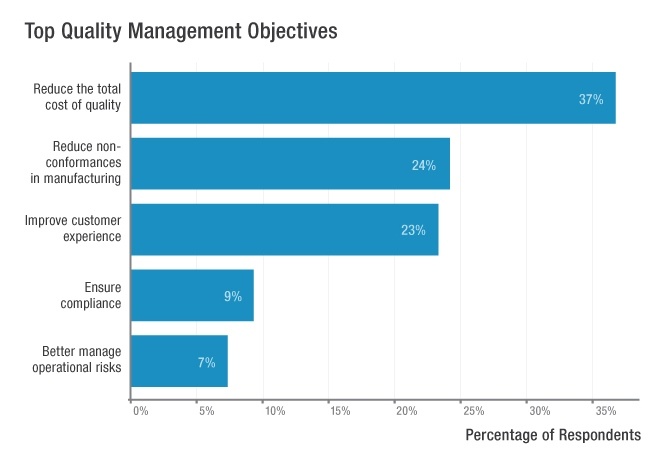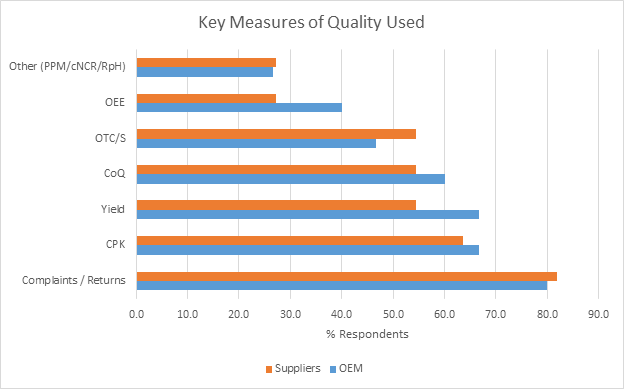 Mature and well-run companies that aim to displace incumbents and bring new products to market faster embrace a risk-based approach. They have to because with greater velocity in the new product process the increase in risk is inherent. Increasingly, quality leaders are expected to demonstrate that controls to prevent undesirable outcomes have been woven into their organization’s approach to quality. Even the less than agile standards engine that is ISO is set to introduce the concepts in its impending 2015 update to the 9001 standard. Both the explicit and implicit nature of ‘risk-based thinking’ is fueling much debate and its fair share of fear mongering along the way.
Mature and well-run companies that aim to displace incumbents and bring new products to market faster embrace a risk-based approach. They have to because with greater velocity in the new product process the increase in risk is inherent. Increasingly, quality leaders are expected to demonstrate that controls to prevent undesirable outcomes have been woven into their organization’s approach to quality. Even the less than agile standards engine that is ISO is set to introduce the concepts in its impending 2015 update to the 9001 standard. Both the explicit and implicit nature of ‘risk-based thinking’ is fueling much debate and its fair share of fear mongering along the way.
It is worth noting that many companies are working to minimize the potential for undesirable outcomes with upstream risk in quality management today. Many have been doing it for products, especially within the engineering function, for decades. Other more regulated industries haven’t had a choice; for example, medical device manufacturers. However to fully realize the benefits of a risk-based approach, efforts regarding existing or ‘in-flight,’ complaints need to be managed exceedingly well. Ideally, they need to be included in a closed-loop quality process. This implicit risk is far different to its explicit more proactive cousin.
Upstream and Downstream Risk
Unwanted, unplanned, and undesirable quality management events, including but not limited to complaints, have the potential to seriously damage reputation and impact the financial performance of an organization. Risk is generally proactive and there are slow and fast moving streams. The slower, more measured approach is upstream, but the more rapid and time sensitive use of risk management is where the water goes over the falls, with the falls representing the product or service being delivered and consumed.
The action imperative is generally a function of the potential severity or consequence of the outcome. It’s the likelihood of the unplanned event occurring in the first place (preventive) or repeating (corrective). In the context of complaints, there’s plenty of work to be done upstream that will drive improvement, but it's hard to know where. This is, of course, unless we have reliable intelligence on what is happening today.
Organizations are asking themselves how, given all the quality management noise an enterprise (and its valued customers) generate, we focus on the right thing, in the right way, at the right time. This is especially relevant when we are dealing with the unplanned and potentially disruptive.
Complaint Vectors
Complaints have a vast spectrum ranging from the benign dissatisfaction of a consumer with buyer’s remorse to a significant/valuable order being fulfilled that is out of specification. In a worse case, a product shipped with a defect or design that fails potentially poses a real threat to customer safety once in use.
There are many vectors for a complaint to take in transmission back to the manufacturer. It must not be assumed that the customer will directly communicate their issue back to the manufacturer in a traditional manner. Social media, with its non-validated and open nature, has the potential to explode with an event. Airlines and the service industry are at the forefront of the onslaught of the free-for-all dissatisfaction broadcast, followed closely by consumer goods manufacturers and the automotive industry.
It would be obtuse of us, in the age of social media, to ignore the potential big data mining and predictive analytics offers in respect to a proactive assault on complaints. With the right approach and tools, sentiment data and internal quality data ‘lakes’ can be mined to help uncover any number of potential issues. These are the types of potential issues that may not have manifested as a complaint per se to date and can be proactively adjusted before the issue escalates, or even avoid impending disaster. For more on this and a potential approach see my colleague Dan Miklovic’s recent 80-20 post here.
Whether the vector is traditional or not, it needs triage and for this to be effective it must be directed appropriately. ISO aligns clearly with by stating one of the objectives of the QMS is to enhance customer satisfaction.
Complaint Triage
The quest to reduce complaints is only possible if events are authenticated, tracked, and managed consistently. Intelligence gathered on the state of complaint-related data can be rolled up by product, department, plant, type, origin, etc. Harmonizing the capture and management of complaints process is a key step. Ideally, irrespective of the origin, the issue should enter the same funnel and pass through the same process. This process should have risk built in and rules for escalation, and containment/corrective action priority. This is of course, underpinned by root cause analysis ensuring that the problem and not the symptom is addressed.
Where required, sales should have the ability to capture in a CRM or directly in a global EQMS. If via CRM, integration to gain line of sight into the EQMS and the ‘treatment’ of the complaint is crucial. This does not mean front-of-house stakeholders duplicate effort, but that they have a ‘window’ on state, status, action, and resolution. This alone is considered a step toward improving the customer’s experience for most, as knowing a complaint is being addressed and being able to access and share the information is more palatable than ‘I’ll get back to you.’
By using a simple risk methodology to prioritize complaints, this underpins a defensible, consistent approach. In addition to built-in rules, based on type of complaint and risk, the organization can take the correct and proportionate action. The issue can be tracked throughout its journey to conclusion and, in a closed-loop process, stakeholders can interrogate the specific complaint and related activities with confidence that it's the single source of truth.
Performance Improvement Based on Fact
Reducing the number of customer complaints is an excellent objective and remains one of the primary metrics for measuring quality performance, as seen in the chart below. Reducing the number of complaints overall indicates upstream quality improvement. This ultimately costs the organization less while delivering satisfaction for customers. Knowing what and where to improve demands insight based on fact. We have to know and understand what the true picture is in order to focus resources and budget on the actual problem in a practicable manner.
Enterprise Quality Management Software (EQMS) is one tool in the quest for weaving risk management into quality processes. In the case of complaints, it not only provides the tools for managing incoming challenges, but it provides (with good design) the best possible insight as to how and where to improve.